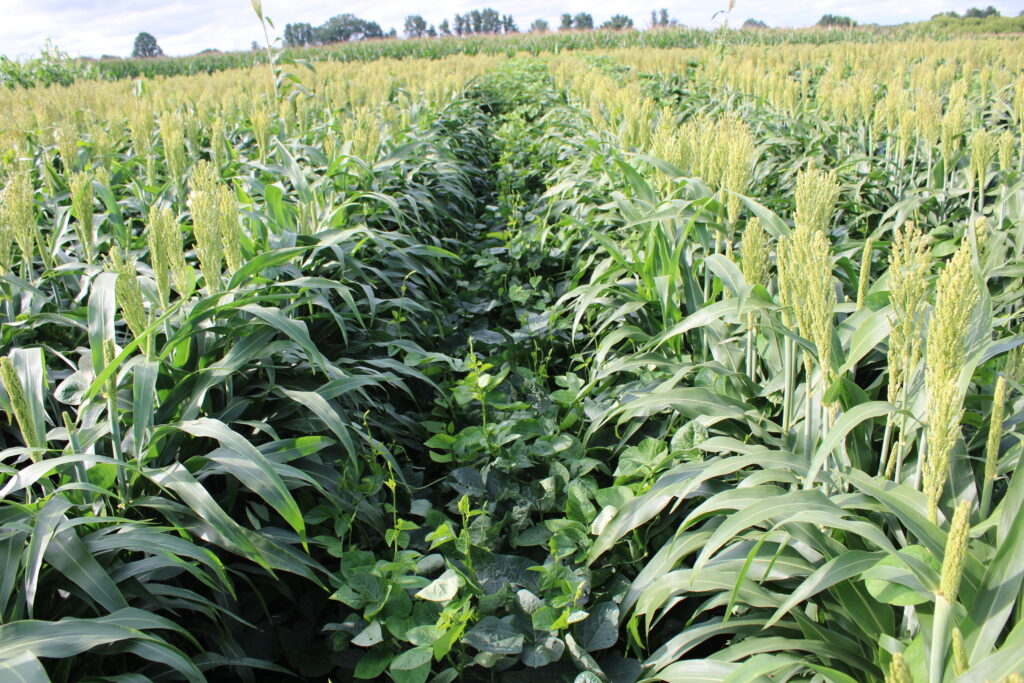The Solar Corridor Cropping System offers the possibility of both yield and soil health
There has recently been an interest by farmers in wide-row corn — sometimes referred to as “stretched rows” — i.e., planting corn in 60-inch rows. This is being experimented with across many parts of the United States, including the corn belt.
Although this concept may seem to be going backward from the evolution of planting corn in narrower and narrower rows, this concept is grounded in science that was conceived by agronomist C. Leroy Deichman, who questioned whether corn yield could be boosted by saturating the lower leaves with sunlight. Normally, in 30-inch rows, the lower corn leaves are shaded by the rest of the plant and contribute little fixed carbon to the final grain yield (Photos 1 and 2).

Corn belongs to a group of plants referred to as C4 plants, based upon the four-carbon form that is fixed in photosynthesis. Corn is highly efficient in fixing carbon, but its limiting growth factor is light. Most other food crops, including wheat and soybeans, belong to a group called C3 plants, which are not as efficient in utilizing CO2; they are limited by CO2. Deichman theorized that if rows were widened to 60 or even 72 inches, then the lower leaves would be sun saturated and would result in greater carbon fixation and corn yield (Figure 1).
Support authors and subscribe to content
This is premium stuff. Subscribe to read the entire article.
















